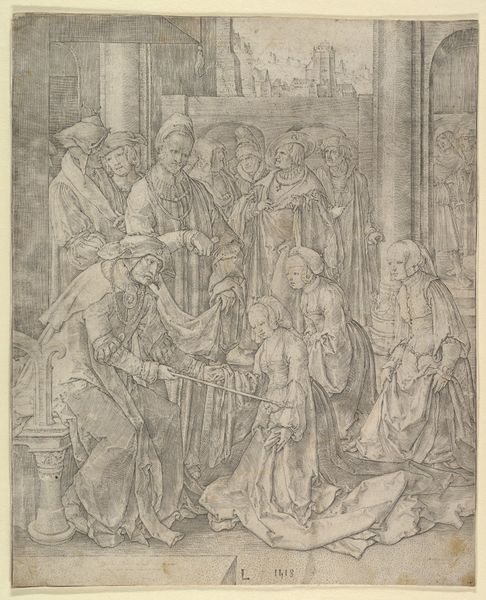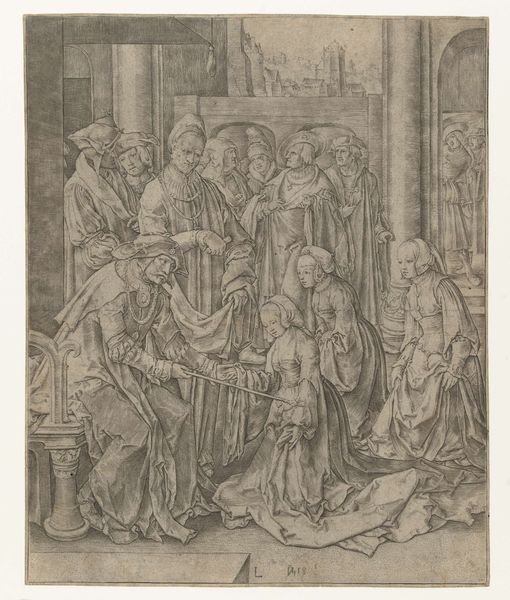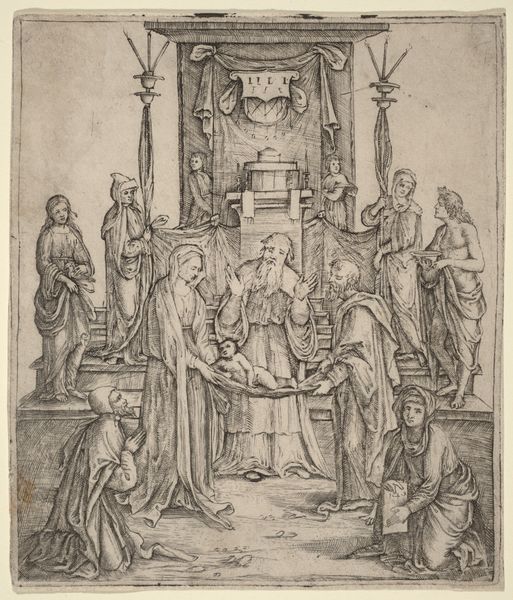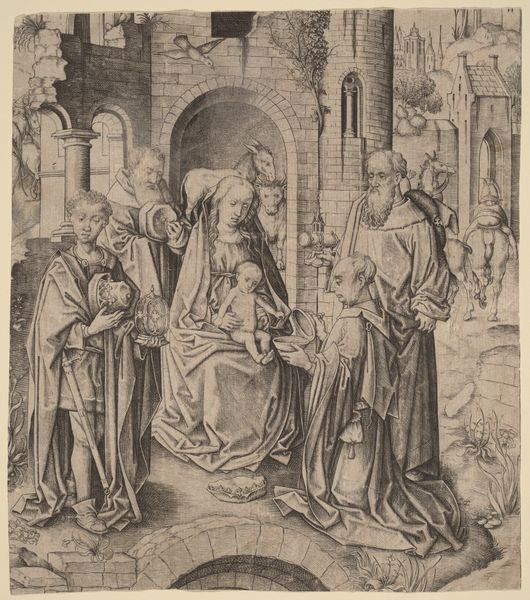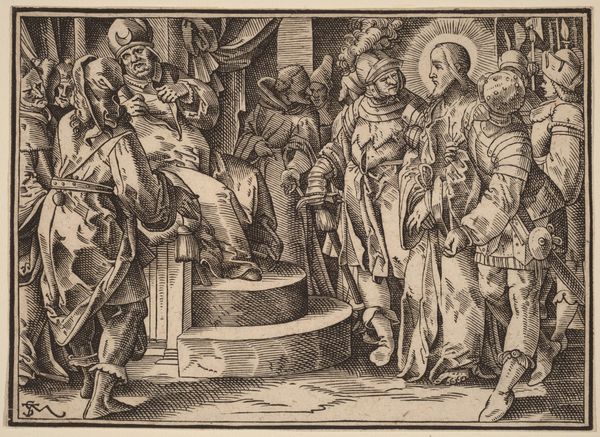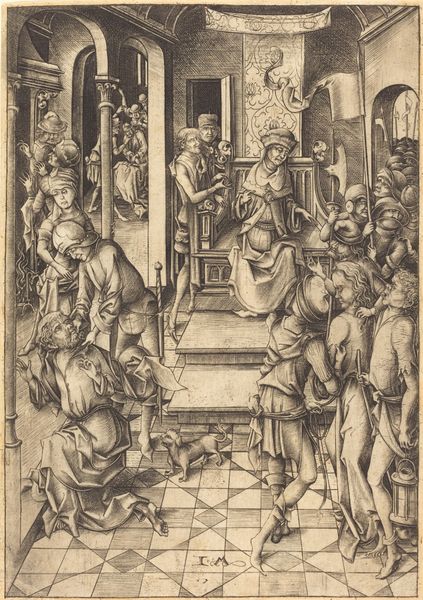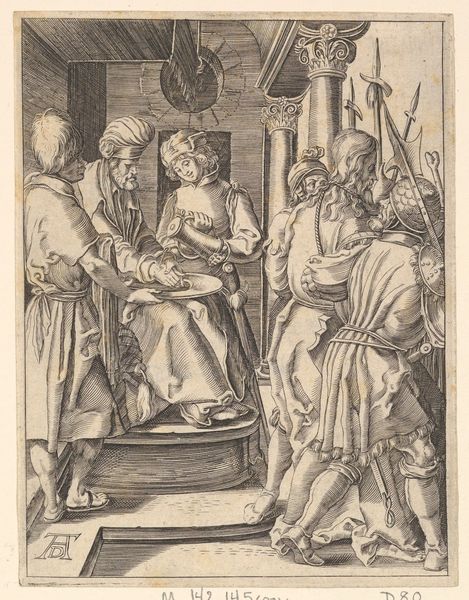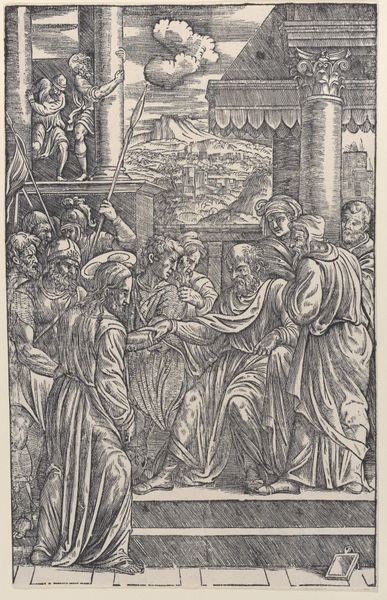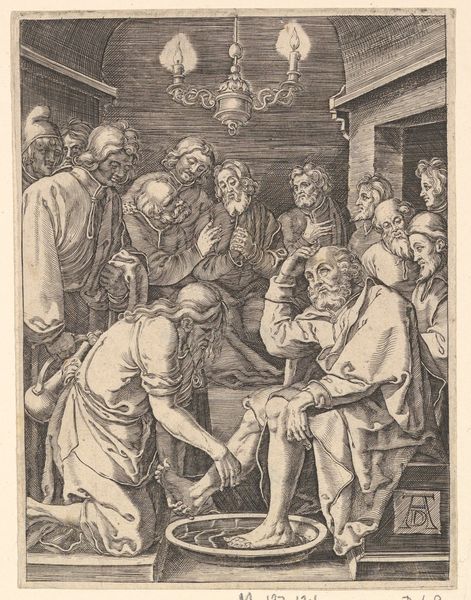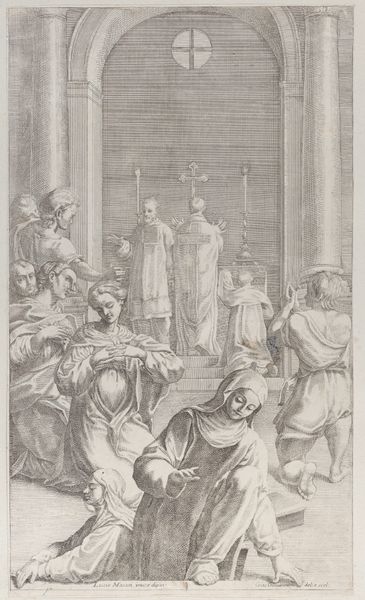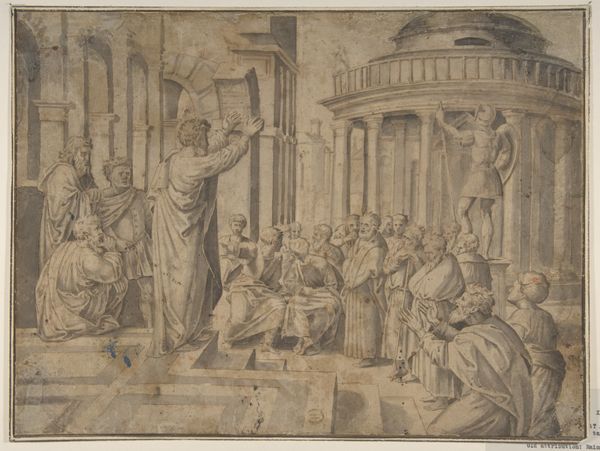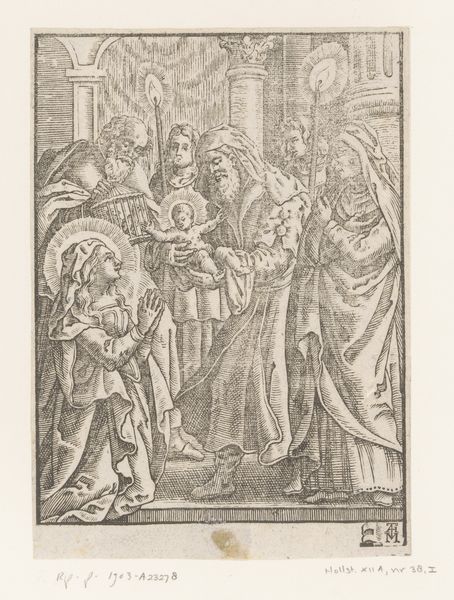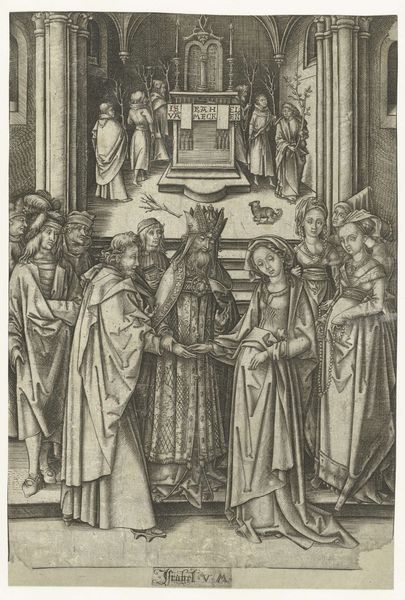
print, engraving
#
narrative-art
# print
#
figuration
#
history-painting
#
italian-renaissance
#
engraving
Copyright: National Gallery of Art: CC0 1.0
Editor: This engraving, "Esther before Ahasuerus," by Lucas van Leyden, made in 1518, strikes me with its intricate details and somber mood. How do you see it, particularly regarding its material impact and cultural implications at the time? Curator: Considering this work through a materialist lens, I immediately see an assertion of control via craft. The act of engraving, transforming a metal plate through labor, mirrors the story of Esther challenging the King. Think of the economy surrounding printmaking in the 16th century: what kind of consumer culture was emerging and being served by readily accessible images? Editor: That's fascinating, I hadn't considered the economics of printmaking and their broader societal implications. What does the very act of replicating this biblical story for a wider audience suggest? Curator: It raises several crucial questions about value and accessibility. Was this about democratizing religious narratives, or was it primarily about commercial opportunity for van Leyden? How did the consumption of prints challenge the established Church's control over interpreting biblical narratives? Editor: I suppose the very production and dissemination democratized the imagery to an extent, breaking from the control of traditional elite patronage, whether religious or secular. It seems like something as basic as this engraving complicates those neat lines. Curator: Exactly. The labour involved, the availability of materials like metal and ink, and the socio-economic context of selling prints--they all intersect in this one image. The story of Esther becomes almost secondary to the mechanics of its delivery and distribution. Ultimately, what does it mean to flatten this dramatic narrative through the reproducible medium of print? Editor: This gives me so much to think about. Considering art beyond just aesthetics but thinking about the actual 'stuff' of making it – who had access, and the ways that it changed consumption of religious ideas at the time. Thank you for your insight! Curator: Likewise! It's crucial to consider art's material and socio-economic dimensions and that doing so fundamentally shifts our understanding.
Comments
No comments
Be the first to comment and join the conversation on the ultimate creative platform.
